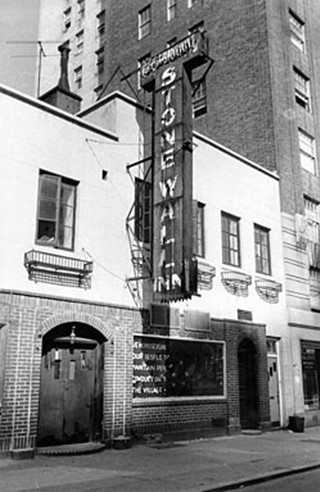Day 1
I’m going to start with three questions:
- What do gender identity and sexual orientation have to do with working in Medical Physics & Clinical Engineering?
- What is LGBTQ+ Pride all about and why does it matter? and
- What is the significance of the 28th June and 5th July?
Some of you reading may have worked out what this is all about and others may not know, but I really hope no-one has answered, “nothing; dunno and no it doesn’t;” although, “they’re both Fridays,” is a reasonable answer to the last question, if you don’t already know!
For those who aren’t sure what this is about, I shall try to explain over the next five days; beginning with a little bit of queer history:

For those who aren’t sure what this is about, I shall try to explain over the next five days; beginning with a little bit of queer history:
After centuries of discrimination against LGBTQ+ people in the UK, the first glimmer of change was in 1967 with the passing of the Sexual Offences Act that partially decriminalised male homosexuality. In New York at that time, however, homosexuality was still very much illegal. Nevertheless, there were bars such as the Stonewall Inn in Greenwich Village that catered specifically to and were popular with LGBTQ+ people.
The Stonewall Inn in the late 1960s is said to have been frequented by a broad cross-section of the LGBTQ+ community, but the establishment had a complicated relationship with the authorities. It was owned by the Mafia, didn’t have a liquor licence and, in common with most LGBTQ+ venues at the time, was regularly raided by the police. On most occasions, the management of the Stonewall Inn received a tip-off that a raid was imminent and, after a few arrests and a short disruption, the bar would continue trading as before. The raid that happened in the early hours of the 28th June 1969, however, wasn’t typical of previous raids, not least because it took much longer than usual, which allowed a crowd to form outside in the street.
The story goes that, as a handcuffed woman was dragged fighting out of the bar and into a police van, she shouted, “Why don’t you guys do something?” It was this cry for support that was the spark that caused the many years of oppression, fear and discrimination suffered by the LGBTQ+ community to explode spontaneously into two nights of full rioting.[2]
One of the effects of the Stonewall riots was the galvanisation of the LGBTQ+ rights movement, which became much more focused and coordinated. One year to the day after the riots, a number of LGBTQ+ rights marches were held in the larger American cities, including New York, to mark the occasion. These marches first held in 1970, are generally considered to be the first Pride marches, although they weren’t to be known by this name until later. Within a couple of years marches were being held in cities around the world, including London. (More about that in Thursday’s post)
Unfortunately, by the early 1980s the celebratory mood had started to change to one of despair, as governments around the world failed to address AIDS, the disease that was to devastate the LGBTQ+ community, particularly gay and bisexual men, for years to come. The political and social mood continued to harden against LGBTQ+ people, particularly in the UK, which finally led to the passing into law in 1988 of the Local Government Act and its infamous Section 28, This stated that a local authority "shall not intentionally promote homosexuality or publish material with the intention of promoting homosexuality" or “promote the teaching in any maintained school of the acceptability of homosexuality as a pretended family relationship". Controversial throughout, this legislation wasn’t repealed in Scotland until 2000 and the rest of the UK until 2003.[3]
In the 1990s and the first decade of the 21st century, slowly but surely LGBTQ+ people started to acquire legal rights and protection against discrimination, especially after the Equality Act 2006. Social attitudes moved more slowly, as is often the case, and I will look at this in more detail tomorrow when I talk about an LGBTQ+ life in STEM from a more personal point of view.
1] This article is not intended to be an authoritative history and I have not accessed primary sources; nevertheless, I have tried to ensure that the events are recounted accurately as best I can. The reader should be aware that LGBTQ+ history is often subject to revisionism; however, the events referred to here occurred within current living memory.
[2] A film dramatisation of the events surrounding the Stonewall Riots was released in 2015 and is available on DVD; however it has been subject to a number of criticisms.
[3] Queer politics are complex and incorporate many other political spheres. An example of this is presented in the 2014 British film “Pride”, which tells the story of the LGSM (Lesbians and Gays Support the Miners) group in the 1980s.
Imagecredits: Wikipedia and https://zeipoliticalqueer.wordpress.com/tag/stonewall-riots/